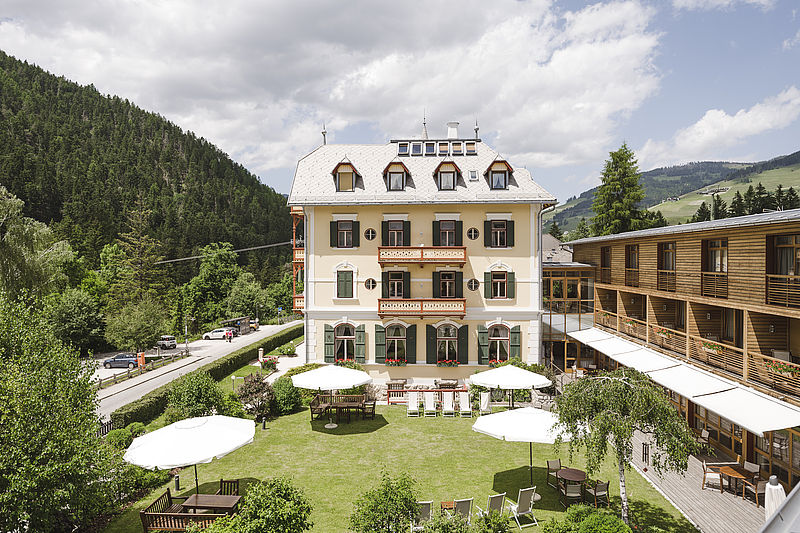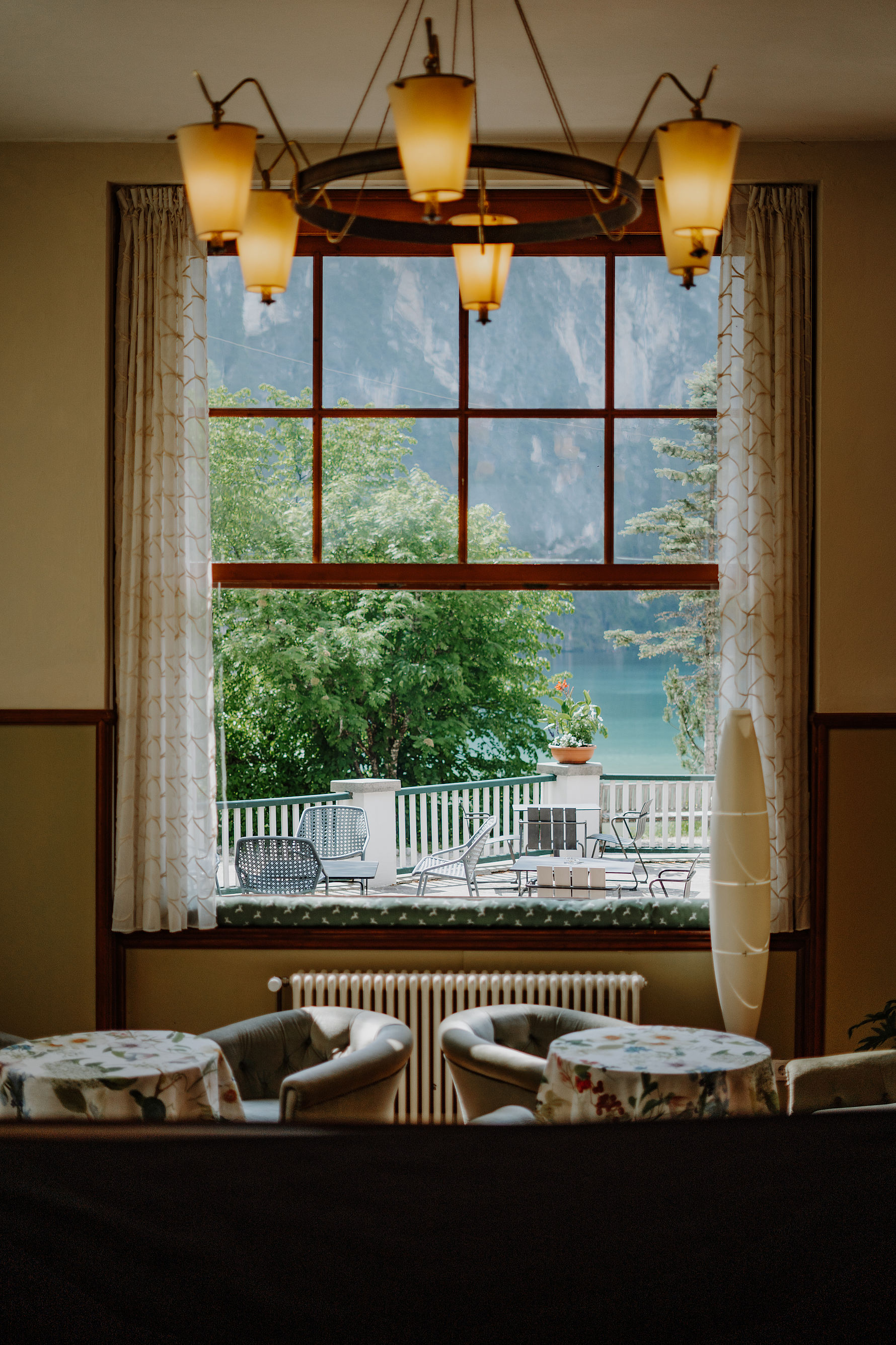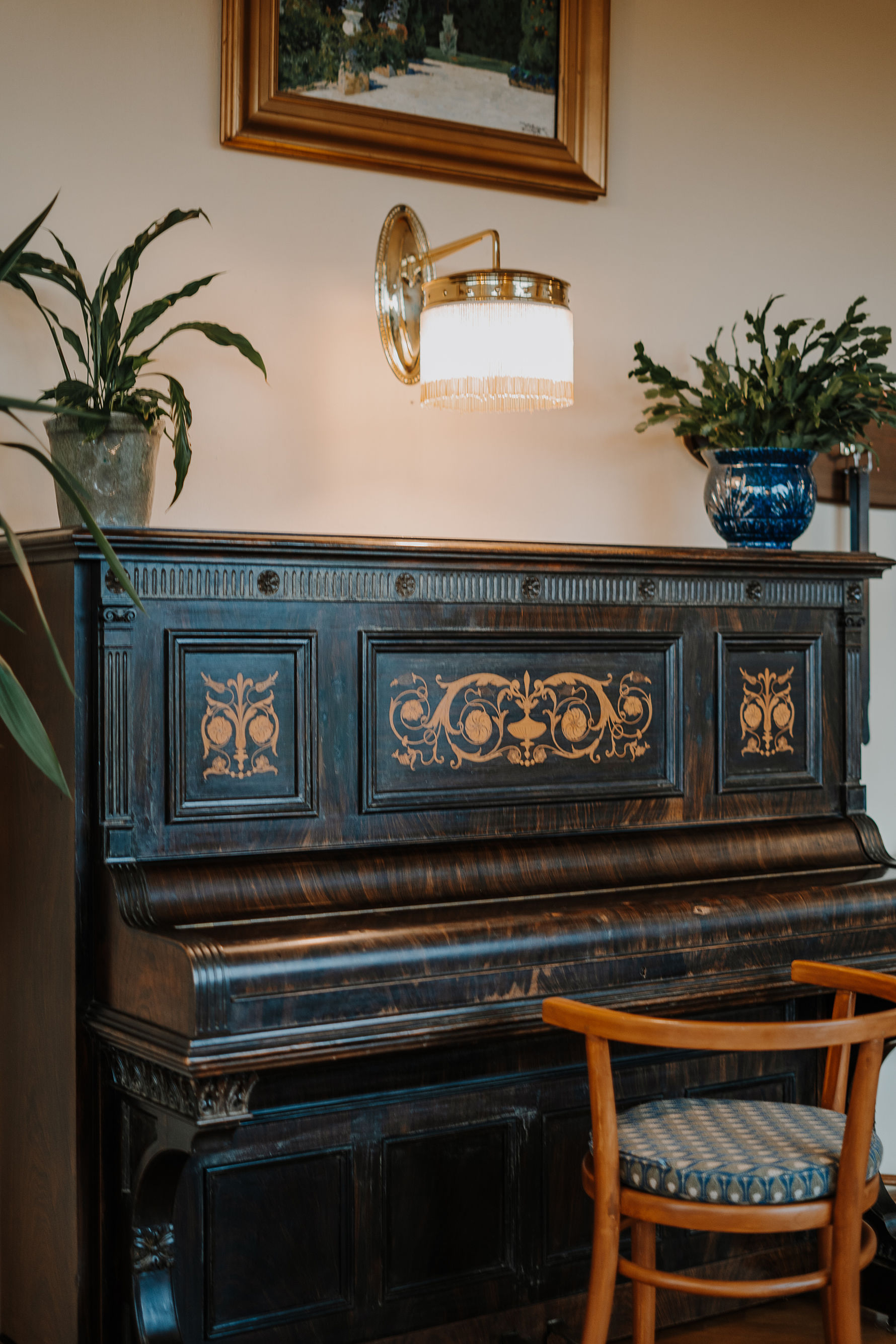The Dolomites are a place of longing. In a conversation about explorers, adventurers, and wealthy guests from the Danubian monarchy, Norbert and Anna Cristina Cristofolini introduce their Monte Sella in San Vigilio (Marebbe), a place full of subtlety locals still affectionately refer to as ‘the hotel’.

Historic: Could you tell us a bit about how alpine tourism evolved in the Dolomites?

Norbert Cristofolini
Host at the Hotel Monte Sella
Unlike other regions and mountains in the Alps, the Dolomites were discovered relatively late—first by English alpinists and travel writers. The English were followed by the Austrians, but most of those were explorers, geologists, and adventurers in the early days. An important factor was the launch of the Puster Valley Railway in 1871. It brought the first “real” guests from the Danubian monarchy from such places as Vienna and Prague. They were nobility and wealthy—the train ride from Vienna to Brunico alone cost a fortune! They would stay the night in Brunico and then continue by coach to San Vigilio to spend months of summer recreation here.
In 1903, the Monte Sella was a real pioneer for tourism in Val Badia—even though there was no electricity there in the beginning, is that right?
Norbert Cristofolini: That’s right. The first power station in the valley was built only later—basically for this house. It ran on direct current at first. But practically the moment when the lights went on here in this house for the first time was also when news of World War I breaking out came in. It’s one of the reasons the Monte Sella remained the only hotel far and wide for a long time. People in the village still call me Norbert ‘from the hotel’. (Laughs.)

Formerly solitary in the open countryside. Today unique in its grace. The Monte Sella in San Vigilio.
Who erected the Monte Sella originally?
Norbert Cristofolini: That was the Mutschlechner family, a very enterprising couple who had moved to San Vigilio to take on the postal service. At the time, the post houses had stables, horses, coaches, rooms for the coachmen…The Mutschlechners built several houses, the Monte Sella was the last one. It was probably one too many, because soon after the house was finished it belonged to a bank. One of my father’s uncles bought it around 1905 or 1906. All records from that time got lost in World War I.
How did your family come to not only own but also run the house?
Norbert Cristofolini: My great uncle co-owned a brick factory in Merano with his two brothers. The hotel in Val Badia was far away and didn’t interest him from a business perspective. However, the three brothers had a sister, who ended up inheriting the Monte Sella: Justina Gilmozzi, my grandmother. Business was very slow after World War I, though. It was a real challenge to maintain a hotel here.
How did she manage the relaunch without the guests from the Danubian monarchy?
Norbert Cristofolini: The Italians started coming after World War I. They were sceptical at first but then got convinced that it is simply marvellous here. (Laughs.) Then followed fascism and World War II—a horrible time. My parents, Giovanni and Olga, worked hard to keep the place running in the decades after the war. I remember being busy in the kitchen myself with my mother.
»For me, this place is more than a business, it’s my life’s work. And my greatest joy is to share its beauty with others.«

Hotel Monte Sella
Tales of mountaintop bliss are told at the Hotel Monte Sella right at the arcadian heart of the Dolomites since no later than 1903.

How has hosting changed since then?
Norbert Cristofolini : The most striking change happened in our relationship with the guests. When we were children, we were never allowed to use the main entrance. There was a huge difference in status between guests, staff, and us children. I, on the other hand, am on first-name terms with everyone. It suits the present times.
Anna Cristina Cristofolini: This cannot be stressed enough: Norbert loves the guests, and the guests love him. They all go ‘Norbert, Norbert, Norbert’—they don’t actually visit the Hotel Monte Sella, they visit Norbert. (Laughs.)
This might explain an exceptional institution you have: the ‘Fedelissimi’, a veteran club for the most loyal guests of the Monte Sella. Who came up with the idea?
Anna Cristina Cristofolini: Norbert of course—together with the guests.
Norbert Cristofolini : We just have a very good relationship with our guests. They are really proud of having their names on that list in the hotel’s salon. It all began about 25 years ago. I update the list every two or three years. In 2003, we invited all club members to the hotel’s 100th anniversary. Which reminds me: Another festivity is on order. Maybe for the 120th.



What’s the greatest challenge in preserving a historic building?
Norbert Cristofolini : You need good craftspeople and good material—luckily, we have both. It’s also a bit more expensive than a regular hotel, especially when you want to redo the balconies, which are all wood and traditional craftsmanship.
The balconies stand out due to their yellow and red. Why those colours?
Norbert Cristofolini : Yellow and red were the Habsburg family’s colours. This kind of balcony was a sign for high-end hotels around 1900. Other hotels from this era also have balconies in those colours, for example, the Paradiso in San Candido and the Grand Hotel in Dobbiaco. Incidentally, we had to renew the balconies three or four times already. The wood will simply weather after some time when exposed to rain and snow.
One can feel that all refurbishment in the house was done very gently. The place’s atmosphere has survived all those years.
Norbert Cristofolini: I just like these beautiful things. And I’m not only interested in business. For me, this place is more, it’s my life’s work. And my greatest joy is to share its beauty with others who cherish it.


Hotel Monte Sella
Via Catarina Lanz 7
39030 San Vigilio di Marebbe, South Tyrol
+39 0474 501 034
monte-sella.com















